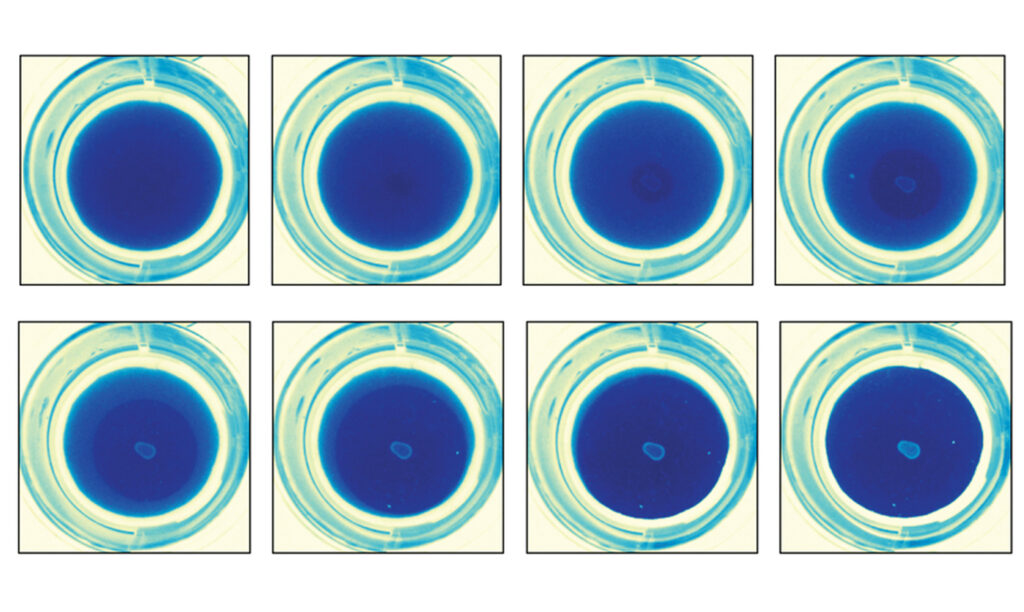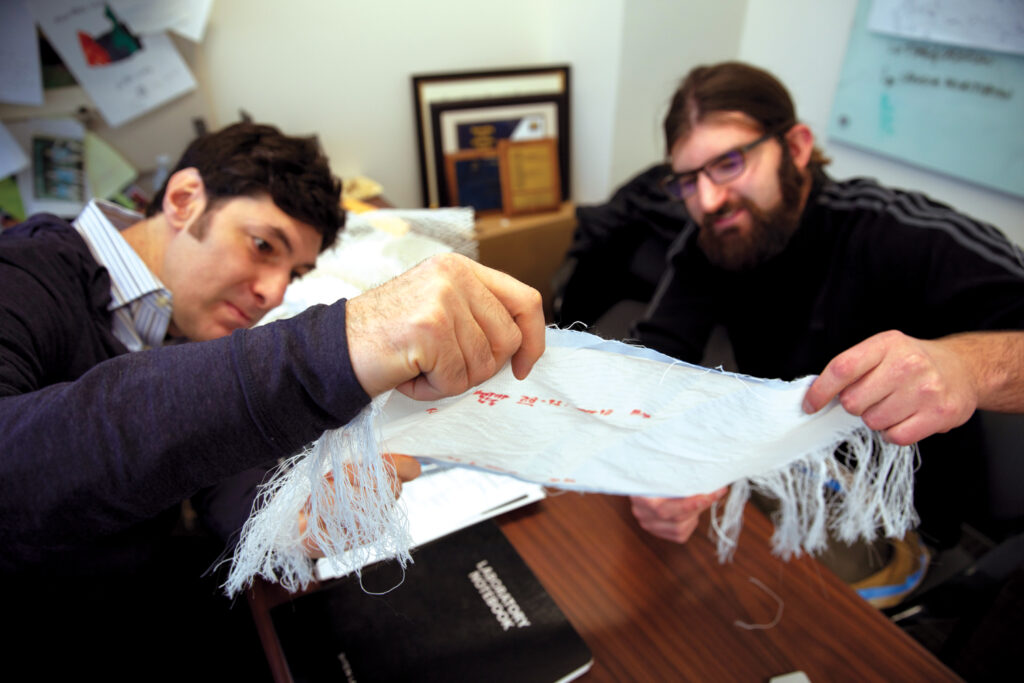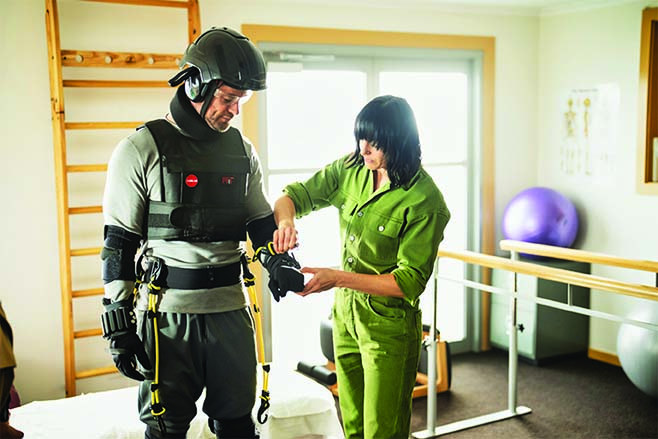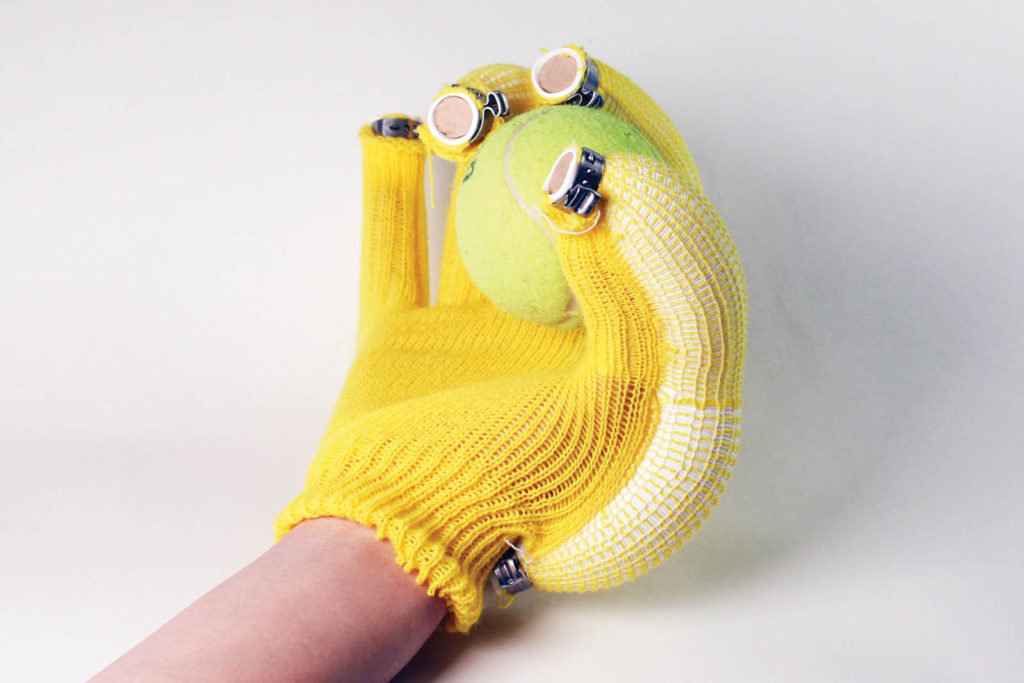Silk fabric walls suppress sound
November 1st, 2024
Massachusetts Institute of Technology’s suppression fabric quiets a space by generating sound waves that interfere with an unwanted noise to cancel it out (figure c) or by being held still to suppress vibrations that are key to the transmission of sound (figure d). Image: Massachusetts Institute of Technology/courtesy of the researchers Step 1: Take inspiration […]
FibeRobo actuating fibers respond to heating and cooling
September 1st, 2024
The Massachusetts Institute of Technology researchers used an industrial knitting machine to create a compression jacket for lead author Jack Forman’s dog (a), whose name is Professor. The jacket “hugs” a stuffed replica dog (b–c) based on a Bluetooth® signal from Forman’s smartphone. Researchers from the Massachusetts Institute of Technology (MIT) and Northeastern University have […]
Just add heat: Researchers create style-changing dress
June 1st, 2024
Massachusetts Institute of Technology (MIT) Self-Asssembly Lab’s knitting machine used to make the base dress design. Researchers at the Massachusetts Institute of Technology (MIT) Self-Assembly Lab have created prototypes of a 4D knit dress that can change style using heat. The yarn that makes up most of the dress is a blend of viscose that […]
Fibers with sensors help study the brain-gut connection
May 1st, 2024
These flexible fibers, which are embedded with sensors and light sources, can be used to manipulate and monitor the connections between the brain and the digestive tract. Image: MIT Massachusetts Institute of Technology (MIT) engineers have designed a new means for probing the connections between the brain and the digestive tract, using fibers embedded with […]
MIT dataset helps predict biodegradable polyesters
January 1st, 2024
Each image was taken eight hours apart and shows the progress of the polymer-eating bacteria. Researchers analyzed a library of 642 polyesters and polycarbonates to predict how biodegradable they are. Image: MIT Biodegradable polymers, including those found in textiles, are a huge area of current research, in part because even some materials that are labeled […]
Photonic fibers could help in recycling textiles
July 1st, 2023
Chemical Engineering Professor Max Stein and Brian Iezzi, post-doctoral researcher, analyze the fabric with photonic fibers woven into it at the Materials Science and Engineering Department, at the University of Michigan’s North Campus Research Center in Ann Arbor, Mich. Photo: Marcin Szczepanski/University of Michigan When it comes to recycling, one issue is the efficient and […]
MIT suit designed to educate about aging
June 1st, 2023
Chris Hemsworth (left) is outfitted in the MIT AgeLab’s AGNES suit on a recent episode of the documentary series “Limitless with Chris Hemsworth.” Photo: MIT AgeLab Visitors to the Massachusetts Institute of Technology’s (MIT) AgeLab in the Center for Transportation and Logistics are greeted by a striking image: a mannequin in a jumpsuit and red goggles. But […]
Longer-lasting implantable batteries
February 1st, 2023
Researchers at MIT have come up with a way to improve the energy density of nonrechargeable batteries that could enable up to a 50 percent increase in useful lifetime, or a corresponding decrease in size and weight for a given amount of power or energy capacity. The new technology could also improve safety, with little […]
3D Knit BioSuit
January 1st, 2023
A view of the prototype BioSuit sleeve, showing its different functions. Photo: MIT Space is referred to as a vacuum because there is a near-total lack of gas molecules. That means there’s also a complete lack of pressure, so the air inside an unprotected astronaut’s lungs would quickly rush out of the body, gasses in […]
Improving the design of soft, assistive wearables
July 1st, 2022
Scientists from MIT’s Computer Science and Artificial Intelligence Laboratory (CSAIL) have devised a scalable pipeline to computationally design and digitally fabricate soft pneumatic actuators. Called “PneuAct,” it has resolved the challenge with soft robotics, which have required manual design and fabrication. PneuAct uses a machine knitting process, which operates autonomously. A human designer specifies the […]
 TEXTILES.ORG
TEXTILES.ORG












